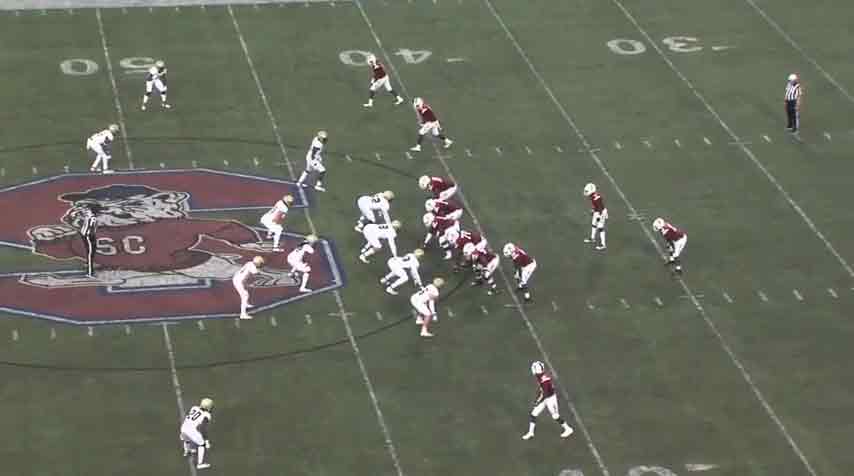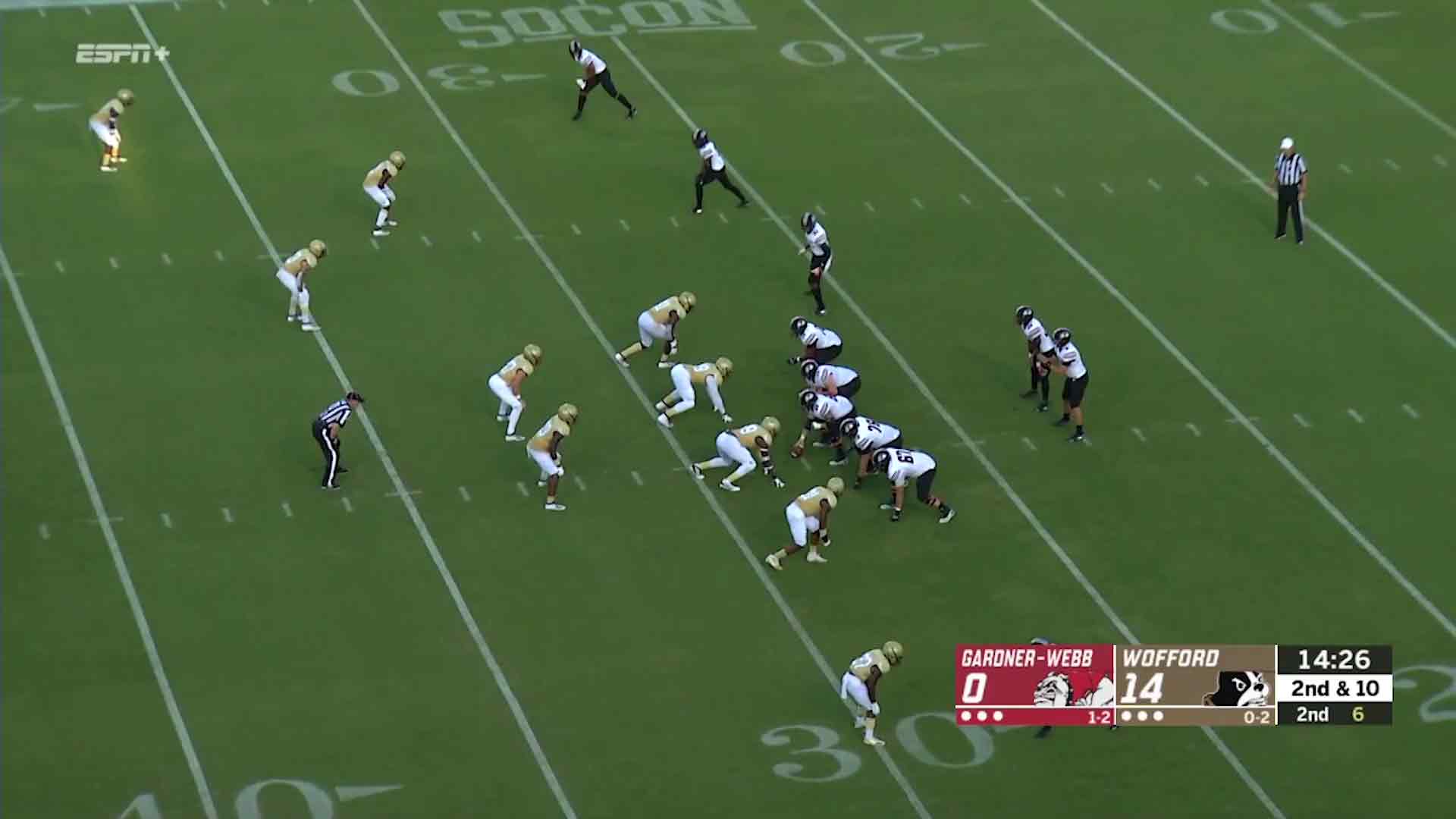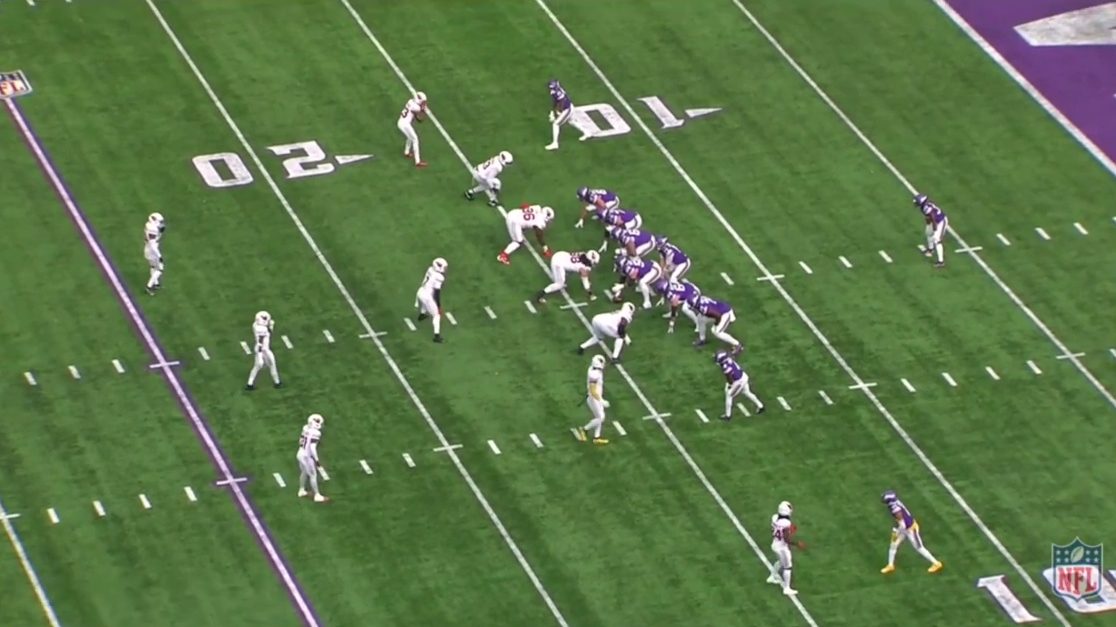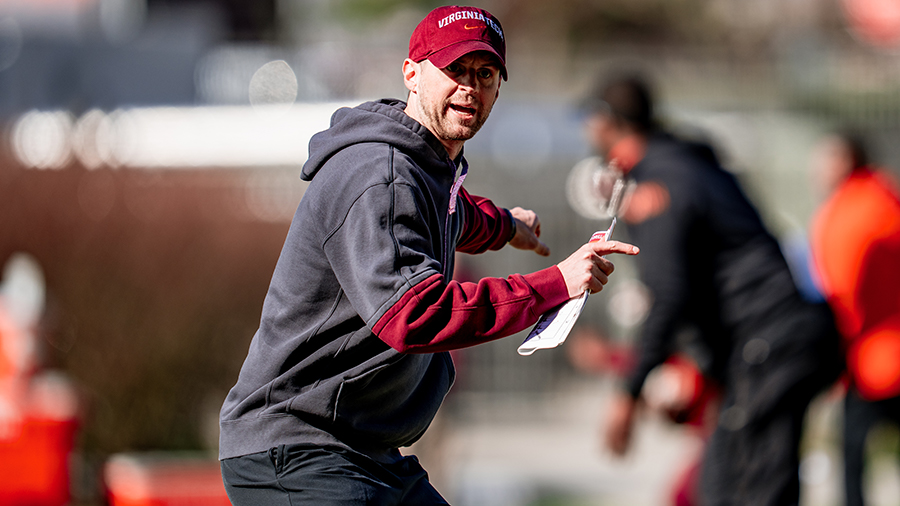New Virginia Tech defensive coordinator Sam Siefkes represents a significant change to a defensive philosophy that has largely been intact since the early 1990s. Hired as the defensive coordinator at Wofford at 26 years old, Siefkes produced the top run defense in all of FCS football, finishing first in the Southern Conference in rushing and total defense both seasons. Siefkes left Wofford to become an assistant linebackers coach with the Vikings, and then moved to the Arizona Cardinals as a linebackers coach.
At each of the stops, Siefkes utilized a three-man defensive front; the nose tackle covered the center and the defensive ends, which play more like defensive tackles, covered the offensive tackles from various techniques. The three down linemen are joined on the boundary side by an outside linebacker who is usually walked up on the line of scrimmage. The 1980s San Francisco 49ers under George Seifert ran a three-man front with a walk-up outside linebacker, most often a quick undersized pass rusher who had very little pass responsibility. Charles Haley rode the role to the hall of fame, while Rickey Jackson, Bryce Paup, and Fred Dean all had success as Seifert's designated rush linebacker.
While Siefkes' base front hasn't changed, his utilization of the linebackers off the line of scrimmage has. At Wofford, his base defense had a field linebacker playing slightly off the ball and two inside linebackers, generally aligning over the guards.

Wofford's base 3-4 under Siefkes
The base look provided Wofford with a variety of advantages. Both outside linebackers could walk up, presenting opposing quarterbacks with two wide edge rushers who could just as easily drop into coverage or slow play the option. There are also multiple variations to this front where the alignment of the three down linemen will vary depending on the pressures called or the tendencies of the offense.
However, there have been two evolutions to this look. The prevalence of spread offenses caused Siefkes to adopt a nickel package. In this look, the Terriers removed their nose tackle, walked up their field outside linebacker like a stand-up defensive end, and added a nickel corner.

Wofford's nickel front under Siefkes
Under Wofford, the scheme was simplified, with the three-man line trying to keep the second-level clean while relying on the outside linebackers to set the edge and force the ball into a defined alley for the safeties.
On this inside zone to the boundary, the three down linemen slant to the field-side. The field defensive end slants to the field became the edge defender, taking on a double team by the left tackle and the left guard. His goal was to cross that tackle's face and get into a contain position, eating the double team along the way. While the end sets the edge, the field outside linebacker gave up contain and dropped back into the flat as a pass defender. Back to the boundary side, the edge linebacker doesn't crash inside, following the rest of the defensive line. Instead, he challenges the block of the playside tight end, keeping outside leverage to force the tailback to cut into the gap between the edge and the boundary defensive end. Both of the Wofford safeties then fill the alley between the 5-tech and the boundary edge to make the tackle. The front, including the inside linebackers, jammed things up to allow the safety to make the play.
The look evolved further in Arizona. The Cardinals began to utilize six defenders in the box and three high safeties, with the explosive Budda Baker as the middle safety. In this look, the Cardinals could mix up a wide variety of alignments, hide coverages, and bring pressure from different angles while relying on Baker's unique ability to provide run support as a dynamic presence in the alley.

Arizona Cardinals' three-high base front under Siefkes
The three high safety concepts clearly appealed to Brent Pry, who was supposedly recruiting Ohio State defensive coordinator Jim Knowles when it appeared Knowles was going to be fired after the Buckeyes loss to Michigan. The Buckeyes used an even front look, but utilized three high safeties with Caleb Downs at middle safety en route to a national championship. When Knowles priced himself out of the Hokies' range, Siefkes became an intriguing lower-cost option.
So, what are the benefits to the odd front with three high safeties?
To continue reading Get Fully Dipped and Join The Key Players Club »
- Exclusive Content
- Interact in community forums
- Post and view comments
- Advanced site features
- No pesky display ads, only offers from TKP sponsors
- Members Only Forum

